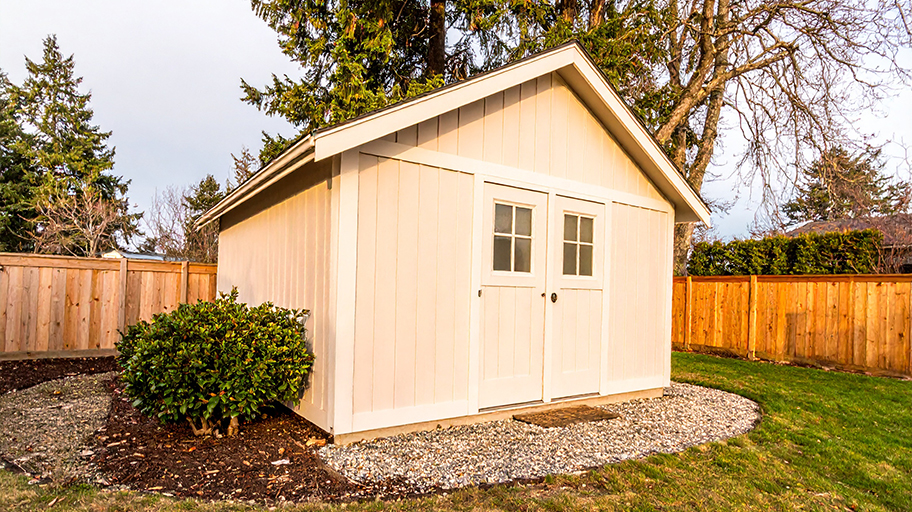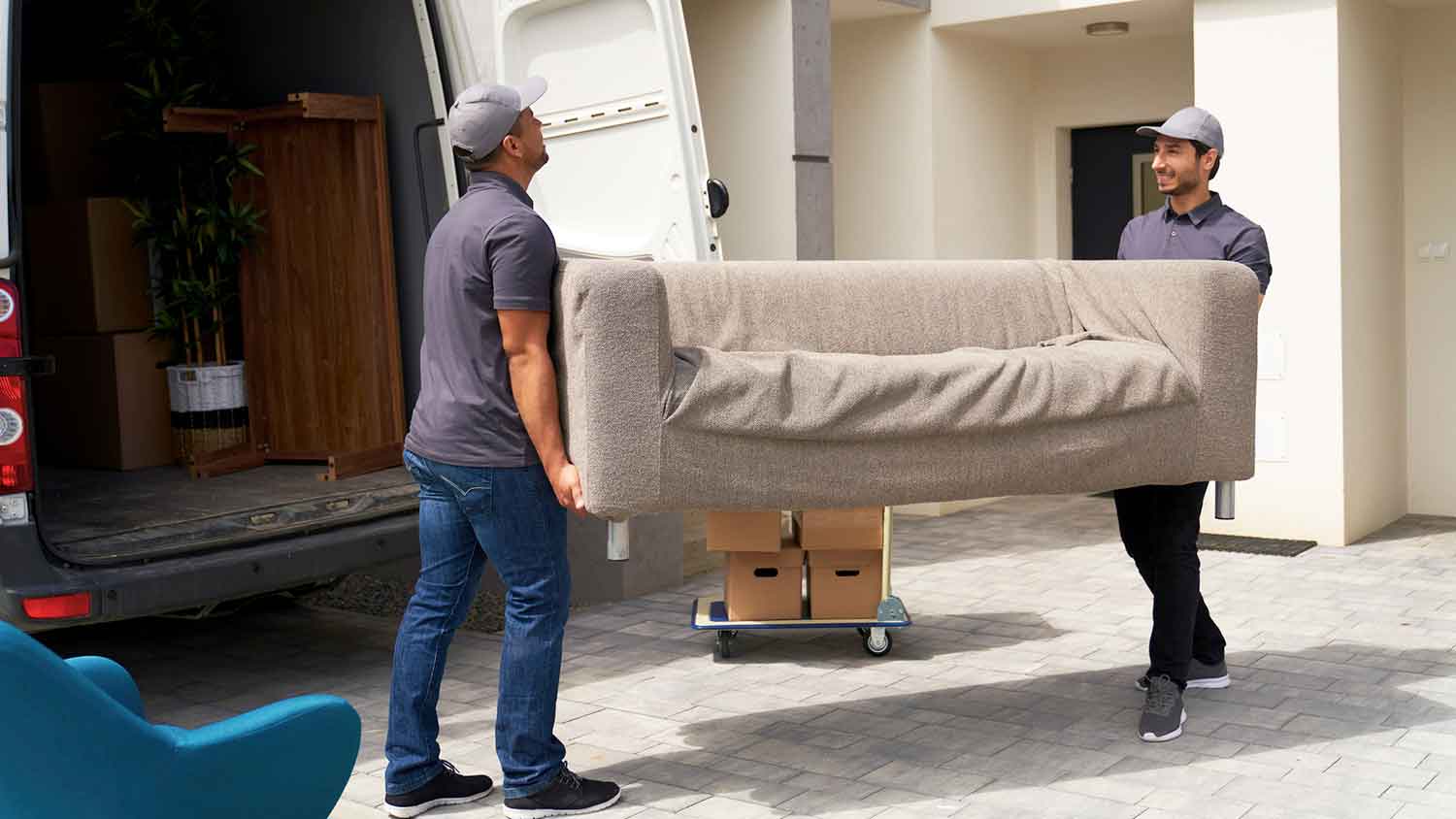
Removing a hot tub costs an average of $400. Learn what factors affect hot tub removal costs, including size, type of hot tub, and disposal method.
Find out if concrete removal is a good DIY or a don’t


The cost of professional concrete demolition and removal averages $1,100, but DIYers also face significant costs when renting the necessary equipment.
Breaking up concrete is strenuous physical work that requires significant strength, which can leave novice homeowners sore or injured.
Concrete dust contains crystalline silica, which can cause lung damage. Breaking up concrete requires a respiratory mask, safety goggles, steel-toed boots, protective clothing, and a hard hat.
Hiring a concrete removal pro ensures that the broken-up slab will undergo an environmentally friendly disposal process.
Concrete is a beautiful addition to any home, but when it starts to crumble or break, it can become an eyesore. While you might want to kick your concrete to the curb, concrete demolition is a physically demanding DIY job. To make the process easier on you, you’ll need some tried-and-true strategies under your belt. Learn how to break up concrete and remove it, whether it’s a sidewalk, patio, or set of steps.
When concrete is in major disrepair, has significant crumbling, is sinking, or has large cracks, it’s essential to remove it. Resurfacing or repairing concrete with structural issues isn’t a good use of time and money, as it only extends the problem. Concrete removal and replacement are sometimes the best long-term investments.

Breaking up concrete is a strenuous project. It requires serious safety gear, tools, and physical labor. Make sure you’re ready to take on this tough material.
Before you start hacking away at your concrete, call 811 or your local dig line to see if any utility pipes are under your concrete slab. The utility company will send a worker to mark underground utilities so you can avoid them. Nicking a utility line can be dangerous and expensive.
Removing concrete can become messy, with concrete flying everywhere and the potential for mishaps. So, protect yourself with safety goggles, a respiratory mask, steel-toed boots, protective clothing, and a hard hat. You can place a 6-millimeter plastic polythene sheet over your work area to keep dust and concrete contained until you’re ready to pry it.
You can also mist the concrete pieces to reduce airborne dust. Concrete dust contains crystalline silica. When inhaled, it can get lodged in the lungs, leading to silicosis, a lung disease.
You need to pick a tool that’ll work best for you and your DIY concrete removal project: your options are a sledgehammer or jackhammer. You need training to use a jackhammer, as it’s a powerful tool and requires advanced skills. Typically, a sledgehammer is a go-to choice when the concrete slab is 4 inches thick or less. It’s always worth testing out for yourself during the prep stage.
During your test, see if the sledgehammer creates major cracks or only breaks the top layer into small pieces. Consider renting a powered jackhammer if you’re putting in work with nothing to show after a few minutes (e.g., small pieces) or the concrete is thicker than 4 inches. However, working with a jackhammer can be physically demanding. A sledgehammer is often less taxing and expensive.
Most concrete slabs are reinforced with wire mesh or rebar, making it time-consuming to break apart. You’ll need to use bolt cutters to cut through the wire mesh as you go, and for rebar, a reciprocating saw should do the trick. You can check if you have wire mesh or rebar by breaking off a piece of the edge and looking underneath.
Even if you’re excited to remove your concrete, it’s a physically taxing job and can quickly lead to burnout. That’s why it’s best as a two-person (or more) DIY. Reach out to a few friends or family members who can lend you a hand. One of you can focus on breaking apart the concrete while the other pries it up and hauls it away.
Hauling away concrete rubble requires a heavy-duty wheelbarrow. If you use a lightweight model, it won’t last more than a couple of loads. Also, we recommend keeping the loads small and taking turns with your work buddy. Otherwise, you’ll be too tired to continue shortly into the DIY project, resulting in you hauling yourself away with the wheelbarrow instead of the concrete. It might be worth renting a fuel-powered wheelbarrow, depending on the path and amount of rubble you think you’ll have.
A digging bar or pry bar can help you lift the concrete to make the rest of the process easier. With a sledgehammer or other tool, create cracks in the concrete. Pry the pieces of concrete from its support system (sand or soil) to help break larger pieces into smaller ones.
When prying, use a little strength to spear the pry bar into the cracked line. You can also dig out a couple of inches of dirt or other surrounding material to make breaking the concrete easier.

You can remove concrete in a few different ways. No matter what, take breaks throughout the project and stay well-hydrated.
With work gloves on, grip your sledgehammer with one hand near the head and the other near the base.
Raise the sledgehammer as high as possible without putting it over your head.
Aim for and strike a piece of concrete within 6 inches of its edge.
As you strike, slide your top hand to meet your lower hand near the base. Avoid swinging the sledgehammer, which could cause injury or wear you out. The steel hammer and gravity are enough to break up the concrete, so let the tool do the work.
Continue breaking up the concrete with the sledgehammer and removing pieces as you go.
Hit different spots in a concrete slab to weaken it, moving in a pattern from one side to the other and creating cracks. Each strike should be approximately 6 to 12 inches apart. You want to create concrete pieces you can lift and haul away.
Periodically use a pry bar to lift pieces of concrete. Having a void underneath the concrete makes it easier to break up.
Jackhammers are best for breaking concrete thicker than 4 inches, larger than 15 square feet, or concrete that’s too tough for a sledgehammer. You should only use a jackhammer if you have the training, as it is a heavy, powerful machine that could cause injury if not used properly. Some municipalities even require you to have a certification to operate a jackhammer.
Always follow safety precautions and cover objects with plastic sheeting to avoid damage from flying debris. When jackhammering, you need to continuously spray water where the bit strikes to reduce dust. You should only operate a jackhammer for up to 40 minutes per day with multiple breaks.
For most residential projects, a 40- or 60-pound breaker should be sufficient. Ensure you have a sharp bit and a spare bit on hand in case the jackhammer gets stuck.
Apply enough pressure on the handles to guide the tool upright at about a 22-degree angle (not 90 degrees). Don’t press your weight down on the machine. Hold the jackhammer firmly but not too tightly, as it can cause more vibrations on your body.
Start near a corner of the concrete slab, then move toward the center about 3 inches at a time to create a crack.
Have a work partner use a pry bar to pull up and remove the pieces of concrete as you go.
Continue cracking and breaking up the concrete while taking breaks, as jackhammers can be physically tiring.
A chemical filler or demolition grout can help weaken and break up concrete. The chemicals expand and break the concrete apart. It can help loosen and deteriorate the concrete for removal or make it easier for you to break the concrete further with a sledgehammer.
Drill holes or create cracks in the concrete with a sledgehammer.
Mix the chemical filler or demolition grout according to the manufacturer’s instructions.
Pour the chemical filler into the holes and cracks.
Allow the grout to sit for up to 24 hours.
Haul away the broken pieces of concrete or break them up further with a sledgehammer before removing them.

After you’ve shown concrete who’s the boss, you need to know how to dispose of concrete. And while it might seem like an easy solution, you can’t dump the concrete in the trash for your garbage pickup service. But that doesn’t mean you’re stuck with it. Here are a few ways to dispose of concrete after DIY removal.
Dumpster rental gives you plenty of time and flexibility to complete your project, as you can choose how long you’d like to keep the dumpster around before it’s picked up. Renting a dumpster costs an average of $380 per week, and while you’ll have to do a lot of heavy lifting yourself to get concrete into the bin, you won’t have to worry about proper disposal of the debris once it’s taken away.
You have a few options if you decide to call in the experts. You can use a local concrete disposal company if that’s the only material you need to dispose of, or you can call a junk removal service near you. These waste haulers will take anything you’ve got and dispose of it correctly, from concrete to old furniture to empty paint cans. On average, junk removal costs $240, but it may be pricier to haul away heavy concrete.
While you can’t leave concrete bits out on the curb for pick up, you can trash it at a landfill if you’re up for the challenge of taking it there yourself. However, this is not the ideal option, and it’s much preferable if you can find a way to reuse or recycle the debris.
Concrete rubble can be repurposed around your home and garden for a ton of eco-friendly projects. It can be used as gravel for your walkway or backfill for holes. If you’ve got way more concrete than you know what to do with, share it with your neighbors or look around locally to find any businesses or charities that might accept the material for donation. Concrete can often be recycled and used in new construction, so take the time to find your local recycling facility to give your leftovers new life.
The cost to break up and remove concrete ranges from $250 to $3,200, depending on the size and type of project. The national average for concrete demolition and removal is $1,100. If you tackle the task on your own, you’re looking at the price of tool rentals or purchases, along with disposal costs. It costs around $550 to dispose of 2 tons of concrete, including truck rental and dumping fees.
Removing and hauling concrete away can be back-breaking. It can also include renting a jackhammer, heavy-duty wheelbarrow, or construction dumpster and equipping another set of hands. You’ll want to be DIY-savvy for this project and comfortable handling a sledgehammer or jackhammer to ensure safe removal.
Hiring a concrete removal pro can be the way to go, saving you time and physical strain. Not to mention, renting or buying equipment for a single project can get pricey.
If you’re hiring a concrete company to pour new concrete, it often makes more sense financially and physically to let them remove your concrete for you. A pro often includes demolition in the cost of a new concrete slab.
Breaking up concrete isn’t for the faint of heart. Here are the best tips to remember when tackling this demanding project:
Don’t rush to get a job done or working too fast can lead to mishandling tools or concrete, leading to a higher chance of injury.
Enlist the help of a partner, friend, or neighbor to lift concrete and help you break it up. Or wet the concrete if you’re using a jackhammer.
Always wear eye, lung, and hand protection when working with concrete to avoid the damage of flying debris.
Strike different parts of the concrete as you go to form a crack, starting from one edge or corner.
Break the concrete into pieces you can lift and haul away, but avoid turning the concrete into gravel, which can be harder to remove.
Remove the concrete pieces as you go to allow for more space and easier demolition.
Be open to stopping the project if you feel it’s too strenuous.
Bry'Ana Arvie contributed to this piece.
From average costs to expert advice, get all the answers you need to get your job done.

Removing a hot tub costs an average of $400. Learn what factors affect hot tub removal costs, including size, type of hot tub, and disposal method.

Shed removal costs depend on size, materials, condition, and if you DIY the demolition or not. This guide will help you budget to remove your shed.

Furniture removal costs depend on the type, size, and location of items. Learn the average cost of furniture removal to free up room in your home.

If you have lots of junk you can’t haul away, it’s time to get professional help. Here are the top junk removal questions to discuss with your pro.

Knowing how to dispose of a piano is a vital part of reclaiming space the instrument may have taken up. This guide will help point you in the right direction.

Looking for ways to make getting rid of debris easier? Use these junk removal tips to save time, money, frustration, and your back.